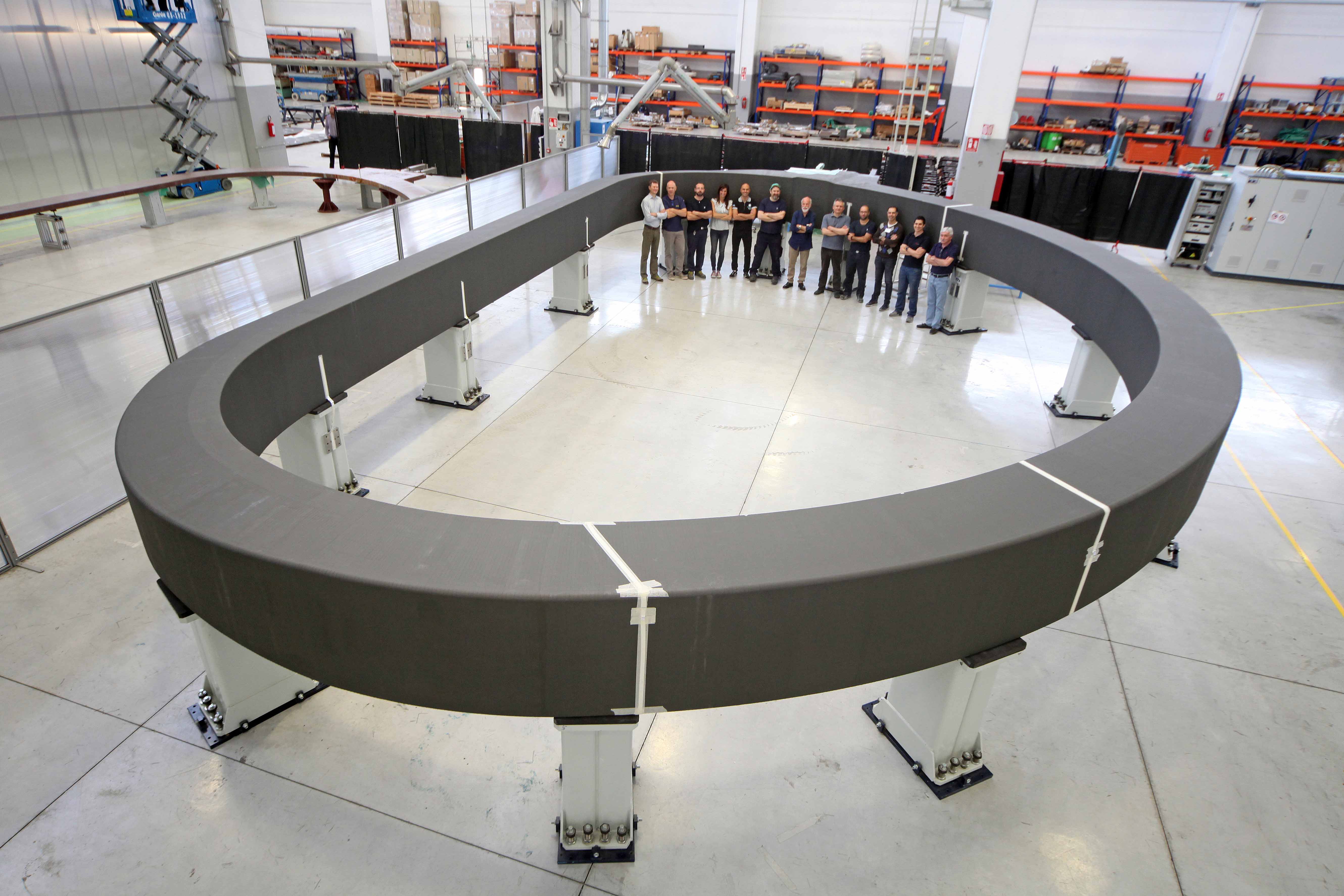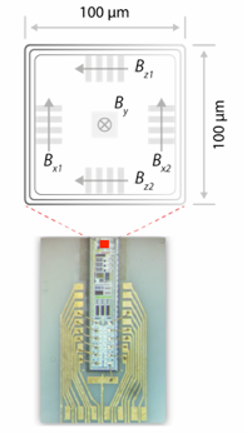SENIS AG
2022
SENIS maps magnetic field for ITER's giant toroidal magnets
In the quest to qualify the ITER European batch of toroidal field coils, SENIS AG, based in Canton Zug, Switzerland, is mapping the magnetic field around the 'D' shaped giant toroidal field coils. The device combines the magnetic field measurement accuracy of SENIS' 3-axis Hall sensor measurement instruments with the positioning precision of a Hexagon Leica Laser Tracker, the Swiss metrology reference product used to measure all large ITER structures. SENIS 3-axis sensor consists of patented vertical and horizontal Hall elements fabricated in CMOS silicon technology. The result is that in a single measurement, the size of three components of the magnetic field and the probe's position are known- instantly, with an impressively high signal-to-noise ratio and resolution.

Courtesy: ASG Superconductors -Italy
Arriving by land and sea, in total eighteen 'D' shaped toroidal field coils will be placed vertically around ITER's vacuum vessel (10 by Europe, 8 +1 spare by Japan). Each weighs 320 tonnes, as much as an Airbus A350, with cables fashioned from Niobium-Tin to maintain superconductivity at high currents and in strong magnetic fields. These are the most potent toroidal field coils ever designed for a tokamak, with a stored magnetic energy of 41 gigajoules and a nominal peak of 11.8 Tesla, or about 250,000 times the earth's magnetic field.
A collaboration of 40 companies participated in the supply of the European magnets, led by the main contractors, one of which, ASG Superconductors S.P.A, Italy, provided a hub for assembly and testing. The quality testing required a low magnetic field in the coils to be measured with high resolution and accuracy in an area as large as 16 m x 9 m. .A tiny chip for a large scale object

SENIS successfully designed a device with the precision to measure the magnetic field around the coil at room temperature before final cooling in the reactor. This task is crucial for the rigorous quality assessment each coil undergoes before being pronounced fit for integration into ITER's reactor. From the outset, it was clear that generating high magnetic fields at room temperature for the qualification tests would produce high temperatures with the risk of permanent component deformation. So instead, the testing required a small magnetic field in the coils of approximatively 15mT. The Hall sensor was integrated inside the T-Probe stylus of a Leica Hexagon Laser Tracker, the Swiss metrology reference product used to measure all large ITER structures, as shown in the title photo. The white cable provides the DC current to the SENIS sensor that measures the Hall voltage generated by the Lorentz force.
The novel vertical Hall devices, patented by SENIS, feature a signal-to-noise ratio at least three times better than other vertical Hall devices. Combined with horizontal Hall elements they build a compact 3D Hall sensor which can measure the magnetic field (Bx, By, Bz) at practically the same spot, with a field-sensitive active volume of 100 µm x 100 µm x 10 µm. At 1kHz, the noise voltage spectral density is 0.8μV/Hz., enabling a magnetic resolution of 1µT. Further, the design of the SENIS Hall probe allows even highly inhomogeneous magnetic fields to be measured without a significant loss of information.
A constant attention to innovation and research driven projects
Recognized for its high-precision Teslameters, SENIS regularly participates in events organized by CERN and the Paul Scherrer Institute (PSI). It was following a presentation of its latest developments at one such event that SENIS was contacted by ASG. The attraction was evident, and SENIS was assigned by ASG to participate in the ITER project. Their challenge was to use their know-how and experience to develop a device for the magnetic field measurement as well as to provide support during the measurement campaign.

About SENIS AG
SENIS AG provides smart, accurate sensors and instruments for measuring magnetic fields and electric current. It engineers advanced solutions and ensures its customers benefit from innovative, optimized, reliable systems.
The company's products fulfill the high accuracy requirements for medical and scientific equipment, help control energy consumption, and optimize green car platforms and systems. As a result, they are continuously contributing to a sustainable future. SENIS collaborates with customers and universities, driving innovation with cutting-edge technologies and steadily extending the limits of feasible in magnetometry and sensor technology.
The company was founded in 2004 by Prof. Radivoje S Popovic, who received the Lifetime Contribution Award of the UK Magnetics Society in 2021. For its novel Hall magnetic sensors, SENIS recently received the Seal of Excellence from the European Commission and the AMA (German Association for Sensors and Measurement) Innovation Award.

Dr. Dragana Popovic Renella
COO
SENIS AG
Zug- Switzerland